13 Foolproof Ways To Lose Stubborn Winter Weight Fast

Winter is the time of year when many of us don’t feel like braving the chilly temps and would much rather hibernate under a pile of blankets. Gym and healthy eating habits may be put on the back burner—especially with tasty holiday meals, treats, and cocktails thrown into the mix. However, when you step on the scale, you may be haunted by the number staring back at you. Spring is almost in bloom, and you’re likely on the lookout for foolproof ways to lose winter weight fast. We spoke with experts who have you covered.
Continue reading to learn the most foolproof ways to lose winter weight fast. And when you’re finished, don’t miss Here’s How Long You Need To Walk Every Day for Weight Loss.
Reevaluate your eating habits.
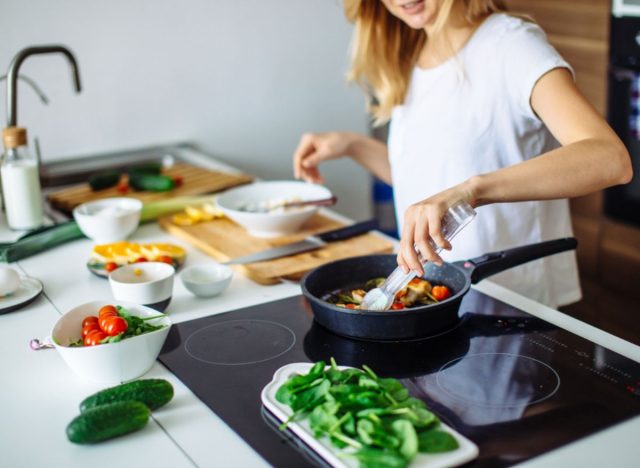
Annette Snyder, MS, RD, CSOWM, LD, from Top Nutrition Coaching, encourages you to do a little spring cleaning when it comes to your eating habits.
“What are your eating habits like these days? Did the holidays lead to unplanned nibbling as you pass through the kitchen? Did you start to skip meals to make up for delicious comfort foods? Are you rushing from meal to meal, unaware of how the food serves you? These are all key eating behaviors that can derail even the best of intentions,” Snyder tells us.
Be mindful of how you eat. Correcting this habit may help boost your efforts. For instance, eating slower helps you realize when you’ve reached a comfortable level of fullness. Snyder also recommends, “Get creative—use your non-dominant hand to eat or put the utensil down after placing a bite in your mouth. Chew well, and don’t pick up that utensil again until a few seconds after you swallow. Or, make it fun—train yourself how to use chopsticks!”
Move more.

Cold winter days call for movies, lighting candles, and snuggling on the couch. They can also make it more challenging to get active outdoors or find the motivation to head to the gym.
“You may have left your movement routine in the leaves last fall,” Snyder says. “What can you do now to get that going? What’s reasonable? What do you enjoy? Do you need some updated gear? It can help to schedule time for intentional movement every week, with a backup plan if something throws off the schedule. Keep it simple at first—the fewer barriers, the better when forming new habits.”
If you’re in a sedentary pattern, shoot for at least five minutes of movement a good portion of the week, Synder suggests. “Chances are, you’re going to stay moving, or at the very least, you won’t start to dislike structured activity and will come back for more later on,” she adds.
Do some investigating.

Start tracking your food and drink habits, even if just for a few days, and be brutally honest with yourself.
“This helps you see any potential problems and start correcting them,” Synder explains. “It doesn’t even need to include strict calorie counting and tracking—sometimes just seeing it and recording it brings insight. Pay attention to the ‘how much’—that’s the key regardless of the food choice.”
Add more protein to meals and snacks.
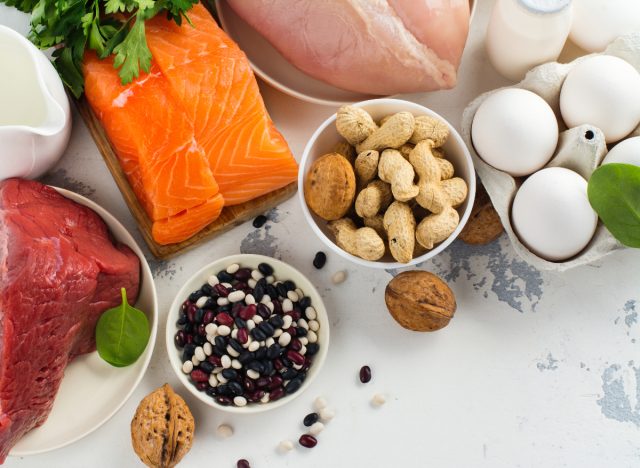
How much protein do you typically include in your meals and snacks? If it’s not much, it’s time to pump things up.
“Protein can make a big difference in how long you’re satisfied after a meal, keeping excess hunger at bay,” Synder points out. “It doesn’t take much—a portion the size of a handful or deck of cards can cover a variety of needs. If you don’t know what protein sources are—research! There’s more than meat out there.”
Hydrate.
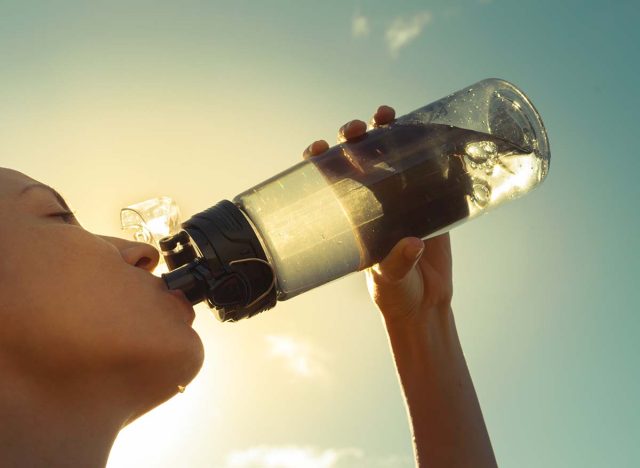
Hydration is a crucial part of an all-around healthy lifestyle and weight loss.
“It keeps the assembly line rolling for things like metabolism, or the conversion of food to fuel,” says Synder. “It hydrates joints to make movement easier. It keeps digestion on track, which helps avoid bloat and other issues. When you feel better, you choose better (food).”
Choose your beverages wisely.

If you usually drink juice, soda, sweet tea, and/or coffee drinks, it’s time to reevaluate this habit. An occasional treat here and there is perfectly okay, but keep in mind that these beverages are loaded with sugar and calories which can add up quickly.
“Other than 100% juice, most of the sugar in these drinks is added, aka, it has no extra nutrition attached. Naturally occurring sugars in juice or fruit at least come with other nutrients,” Synder notes. “[In addition,] consider that a 32-oz regular fountain soda can easily add in a meal’s worth of calories. You are in effect consuming an extra meal each day that you didn’t even consider.”
Fill up on fiber.
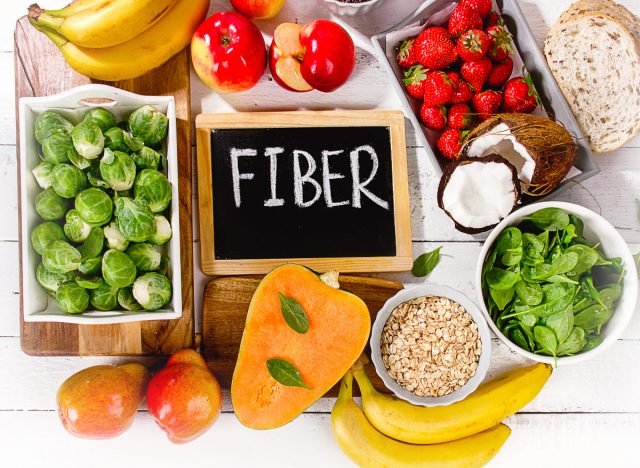
A healthy gut is a happy gut, so take care of it and feed it right.
“Fiber is an essential part of our diet that not only aids in digestion, [but] it also nurtures the microbes residing in our gut,” Synder explains. “These microbes, or our microbiome, have a lot to do with food preferences, among other things.”
Fiber helps fill you up and keeps unhealthy cravings at bay, as it’s more gradual to digest. It can also help you avoid drastic blood sugar swings, which can result in cravings and unhealthy eating habits. Synder recommends choosing foods that have at least 3 grams of fiber in each serving.
Don’t forget about healthy fats.
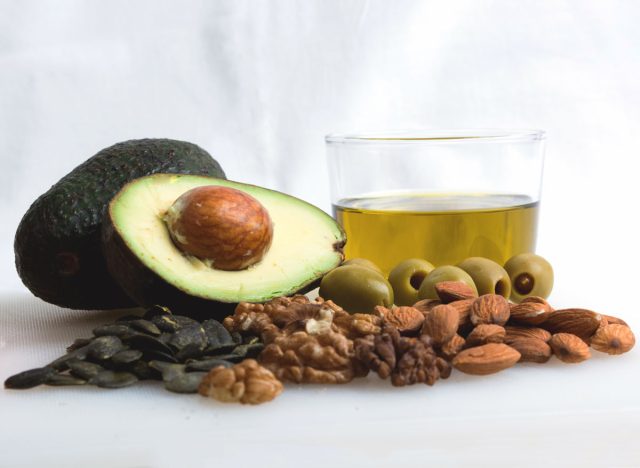
Not all fat is bad! Synder encourages you to include some fat in meals.
“Fat plays a crucial role in both food and the human body,” she says. “It enhances the flavor of food and helps to prolong the feeling of satisfaction after eating. If you completely cut out fat from your diet, you may find yourself constantly hungry and prone to unplanned snacking.”
Opt for fats like avocados, olive oil, nut butter, seeds, and nuts, all of which offer health benefits. Portion sizes of these foods are usually on the smaller side, and Synder confirms, “A little bit goes a long way.”
Meal plan.
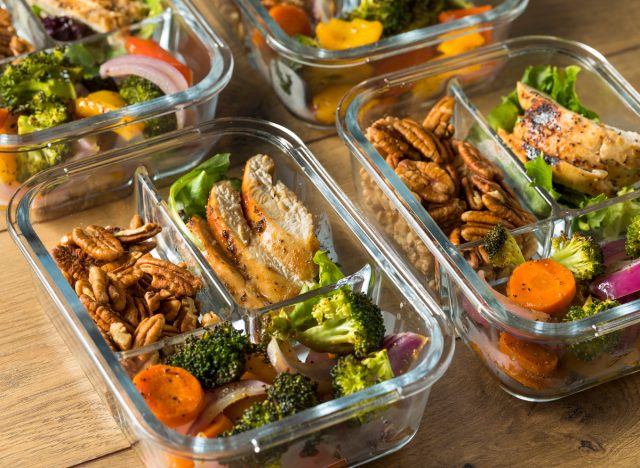
Planning meals in advance may seem like a daunting task, but don’t overcomplicate things! As a matter of fact, mapping out your meals and snacks can make you less likely to reach for unhealthy options.
“You can start by keeping separate meal components on hand that can be quickly combined to provide all the nutrients you need,” Synder suggests. “For instance, stock up on proteins like Greek yogurt, string cheese, edamame, seeds, nuts, nut butters, pouches of tuna, canned beans (just be sure to rinse them), or even a protein shake. Pair that with a plant-based food such as a handful of baby carrots, an apple, or some precooked grains in packets. If it helps, start with just planning one meal at a time.”
Be consistent.
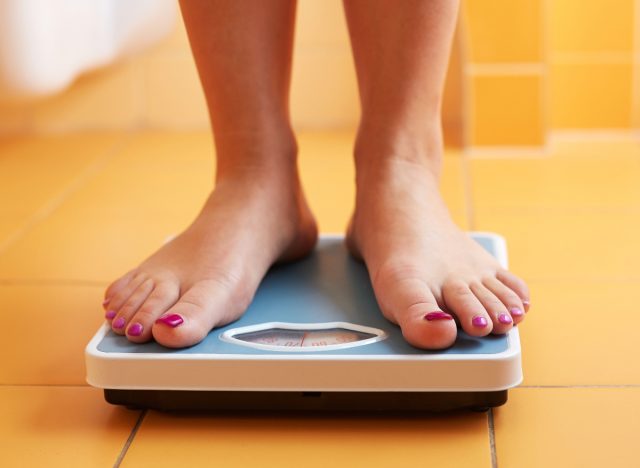
No matter the goal you’re trying to achieve, consistency is king. Small tweaks in your daily routine can make a big difference when done consistently over time.
“You may not immediately notice a change in your weight, but don’t give up,” Synder encourages. “Instead, focus on how your clothes fit rather than the number on the scale … Gradual changes are easier to implement in your routine and help your body adapt better, resulting in longer-lasting results. This means that you can worry less about regaining weight every year, and you’ll experience less weight cycling, which can damage your metabolism and lead to easier weight gain in the future.”
Make whole foods a priority.
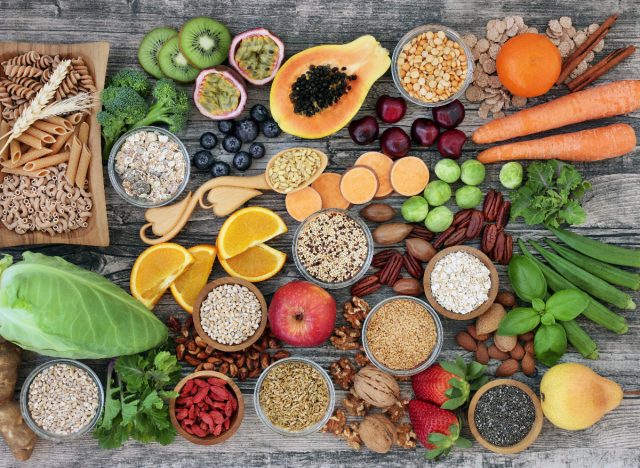
Working whole foods into your diet should be a top priority, so be sure to update your shopping list.
“Focus on consuming whole, nutrient-dense foods like fruits, vegetables, lean proteins, and whole grains,” stresses Amy Goodson, MS, RD, CSSD, LD, a registered dietitian and certified specialist in sports dietetics who sits on our Medical Expert Board. “These foods are generally lower in calories and higher in essential nutrients, promoting satiety and overall health.”
Monitor your portion sizes.
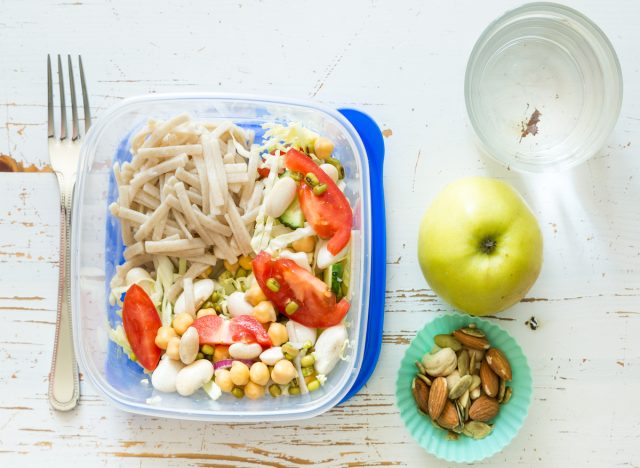
Monitoring your portion sizes is a seamless weight-loss tip you can practice for every meal, whether dining at home or out.
“Pay attention to serving sizes to avoid overeating, as portion control is crucial for weight management,” Goodson shares. “Using smaller plates and measuring portions can help prevent excess calorie intake.”
Get solid rest.

Resting, recovering, and maximizing your bedtime routine may not seem like you’re taking big strides toward weight loss, but they’re key parts of the puzzle. “Aim for seven to nine hours of quality sleep each night, as inadequate sleep can disrupt hunger hormones and lead to cravings for high-calorie foods,” Goodson explains.









